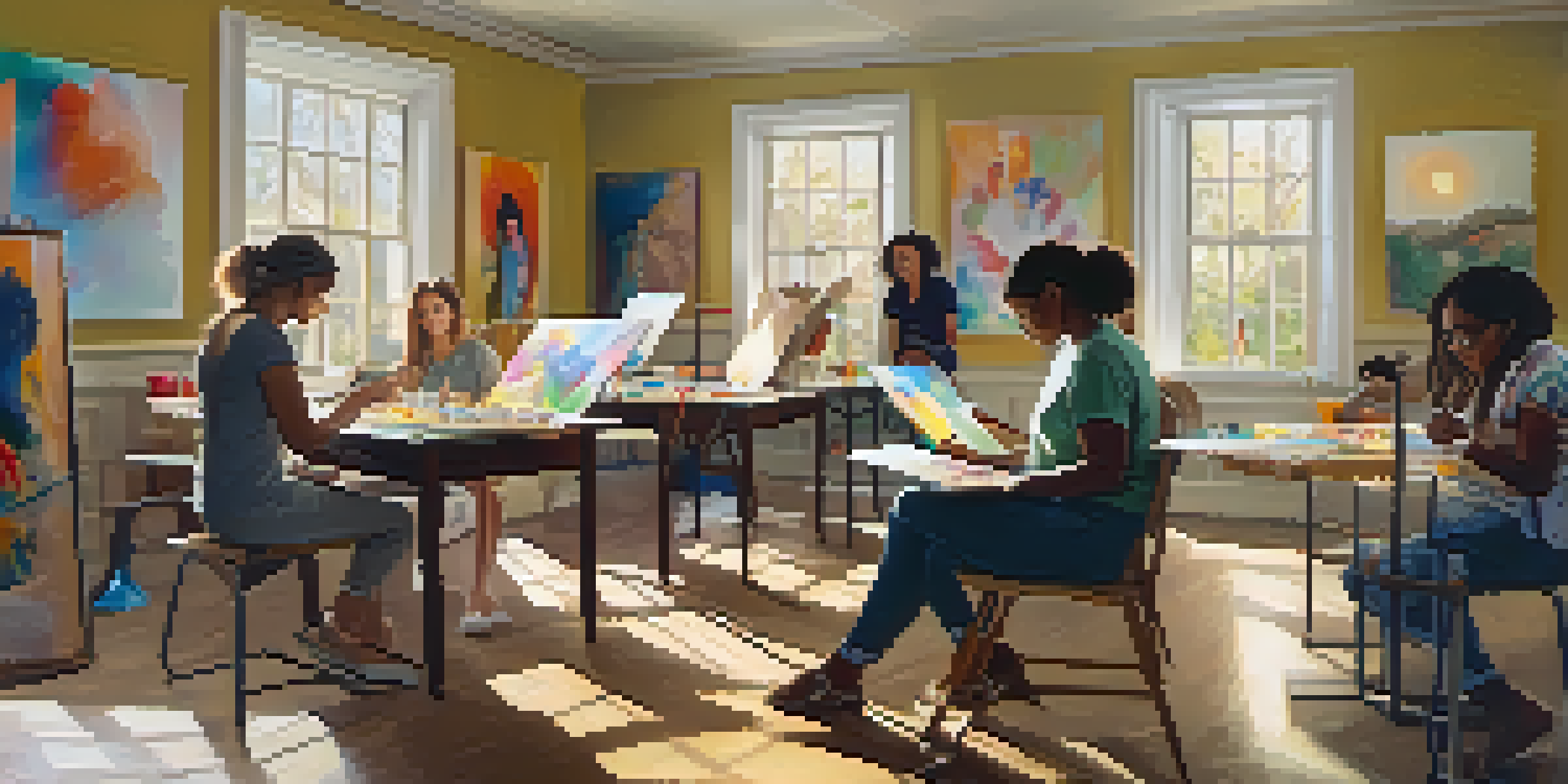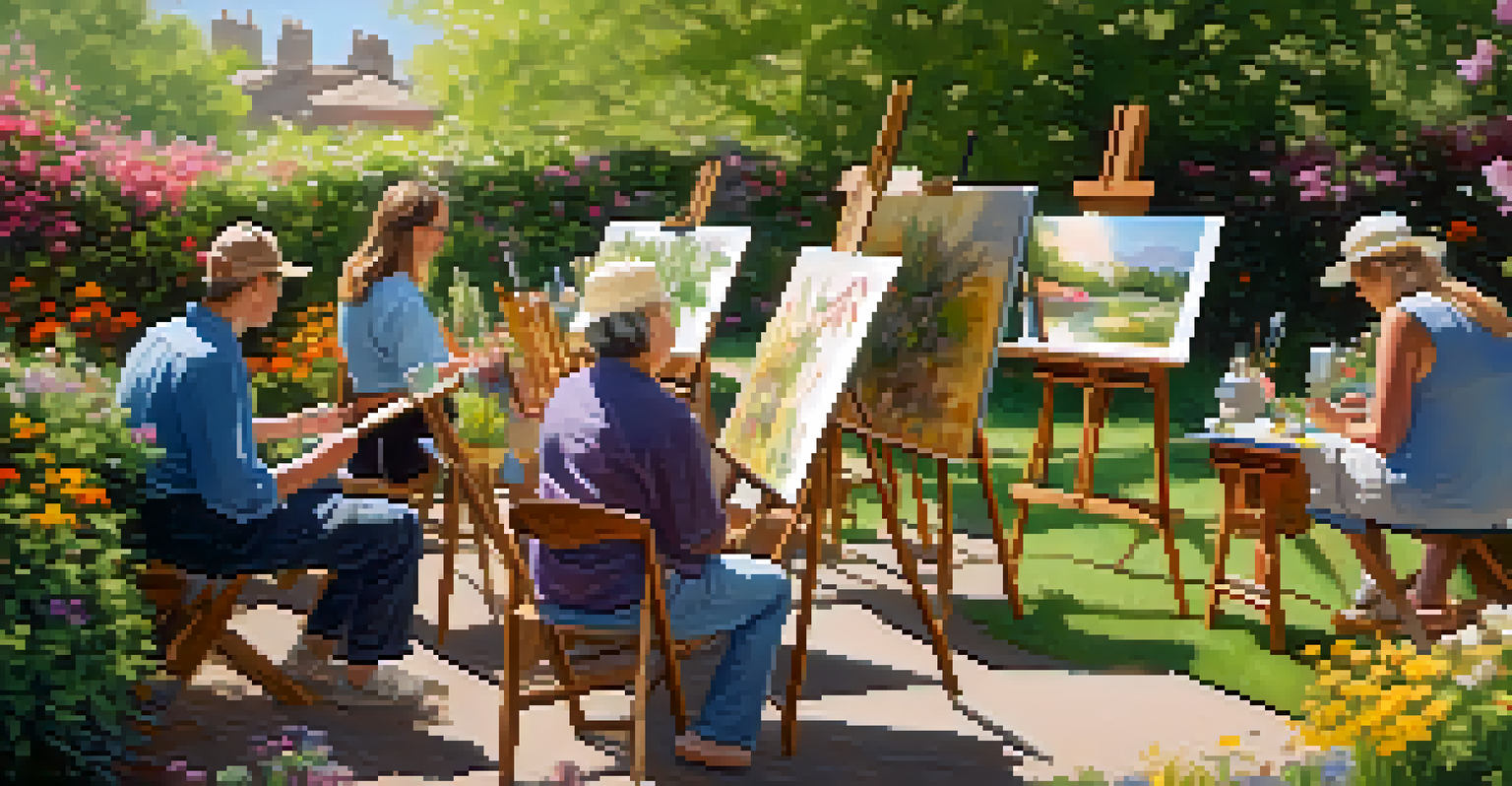The Impact of Marijuana on Emotional Expression in Art Therapy

Understanding Art Therapy and Its Goals
Art therapy is a unique therapeutic approach that combines creativity with psychological healing. The goal is to enable individuals to express their emotions through various art forms, allowing them to explore feelings that may be difficult to articulate. By using mediums like painting, drawing, or sculpting, participants can convey their inner thoughts and experiences, promoting emotional release and healing.
Art is the most beautiful of all lies.
In art therapy, the process of creating is often more important than the final product. This approach helps individuals tap into their subconscious, revealing hidden emotions that may influence their mental health. The non-verbal nature of art allows for a broader spectrum of expression, making it an effective tool for those who struggle with traditional communication methods.
By integrating art with psychotherapy, individuals can address personal issues, trauma, and stress in a safe and supportive environment. This method not only fosters emotional expression but also nurtures self-esteem and self-awareness, essential components of personal growth.
The Role of Marijuana in Emotional Expression
Marijuana is often associated with relaxation and altered perceptions, which can influence how emotions are expressed. For some individuals, using marijuana can lower inhibitions, making it easier to access and express feelings that may normally be suppressed. This can lead to deeper emotional engagement during art therapy sessions, as participants may feel more at ease exploring their inner worlds.

However, the effects of marijuana can vary widely from person to person. For some, it enhances creativity and emotional sensitivity, while for others, it might provoke anxiety or disconnect from reality. Understanding these individual differences is crucial for therapists when considering the use of marijuana as a potential facilitator in art therapy.
Art Therapy Encourages Emotional Release
Art therapy uses creative expression to help individuals explore and articulate feelings that are often difficult to communicate.
Ultimately, the impact of marijuana on emotional expression in art therapy is complex and multifaceted. While it may serve as a catalyst for emotional exploration for some, it can also pose challenges that therapists need to navigate carefully.
The Therapeutic Benefits of Marijuana
Research suggests that marijuana may offer various therapeutic benefits, particularly for those dealing with anxiety, depression, or PTSD. By alleviating symptoms of these conditions, marijuana might create a more conducive environment for emotional expression in art therapy. Participants may find it easier to engage with their feelings and express them creatively when their anxiety is reduced.
The healing power of art is a result of the creative process itself.
Moreover, marijuana has been noted to enhance sensory experiences, which can enrich the creative process in art therapy. The heightened awareness of colors, textures, and sounds may inspire individuals to explore new artistic avenues, leading to profound emotional revelations. This sensory enhancement can transform a simple art-making session into a deeply introspective journey.
However, it’s important to approach the use of marijuana in therapy with caution. While it may provide benefits, therapists must monitor its effects closely to ensure that individuals remain grounded and can effectively process their emotions.
Challenges of Using Marijuana in Art Therapy
While the potential benefits of marijuana in art therapy are noteworthy, there are several challenges that need to be addressed. One major concern is the variability of its effects on different individuals, which can complicate the therapeutic process. A session that works well for one person might not yield the same results for another, leading to inconsistent outcomes.
Additionally, the legal status of marijuana can create barriers to its use in therapeutic settings. In regions where marijuana remains illegal or stigmatized, therapists may face ethical dilemmas or legal repercussions when considering its incorporation into treatment. This can limit access for those who might benefit from its use in art therapy.
Marijuana Can Enhance Emotional Expression
For some, marijuana may lower inhibitions and facilitate deeper emotional engagement during art therapy sessions.
Therapists must also be aware of potential dependency issues that could arise from using marijuana. While it may provide temporary relief, relying on it as a coping mechanism could hinder long-term emotional growth and self-sufficiency.
Personal Experiences: Anecdotes from Art Therapy
Personal stories often illuminate the impact of marijuana on emotional expression in art therapy. For instance, one participant shared how using marijuana before a session allowed her to confront feelings of grief that she had been avoiding for years. The art she created during that session became a powerful outlet for her emotions, helping her to process her loss in a way she hadn’t been able to before.
Another individual noted that while marijuana helped him relax, it sometimes led to overwhelming emotions that were difficult to manage. He found that while his creativity flourished, he needed to be cautious about the dosage and timing to ensure a balanced experience during therapy. This highlights the importance of tailoring the approach to each individual’s needs.
These anecdotes underscore the idea that while marijuana can facilitate emotional expression, it’s not a one-size-fits-all solution. Each person's experience is unique, and therapists must work collaboratively with clients to navigate their emotional landscapes effectively.
Ethical Considerations in Art Therapy
When incorporating marijuana into art therapy, ethical considerations play a crucial role. Therapists must ensure that clients are fully informed about the potential effects of marijuana, including both benefits and risks. This transparency builds trust and empowers clients to make informed decisions about their therapeutic journey.
Furthermore, therapists need to maintain a professional boundary while also being supportive of their clients' choices. This balance is essential for fostering a safe environment where individuals feel comfortable exploring their emotions, whether they choose to use marijuana or not. Establishing clear guidelines can help prevent misunderstandings and ensure that therapy remains a constructive experience.
Ethical Considerations Are Crucial
Therapists must navigate ethical concerns regarding marijuana use, ensuring clients are informed and supported in their choices.
Lastly, ongoing education about the evolving landscape of marijuana use in therapeutic settings is necessary for therapists. Staying informed about research, legal changes, and best practices can enhance the effectiveness of art therapy while keeping the focus on the well-being of clients.
The Future of Marijuana in Art Therapy
Looking ahead, the integration of marijuana in art therapy could evolve as more research emerges. As societal views on marijuana continue to shift, therapists may find greater acceptance and understanding of its potential benefits. This could pave the way for developing standardized practices that incorporate marijuana alongside traditional therapeutic techniques.
Moreover, ongoing studies may reveal new insights into the specific conditions that benefit most from the combination of marijuana and art therapy. Understanding how different strains or methods of consumption impact emotional expression can help therapists tailor their approaches to individual needs, maximizing therapeutic outcomes.

Ultimately, the future of marijuana in art therapy holds promise, but it requires careful consideration and ongoing dialogue within the therapeutic community. By prioritizing client well-being and staying informed, therapists can navigate this complex yet potentially rewarding landscape.